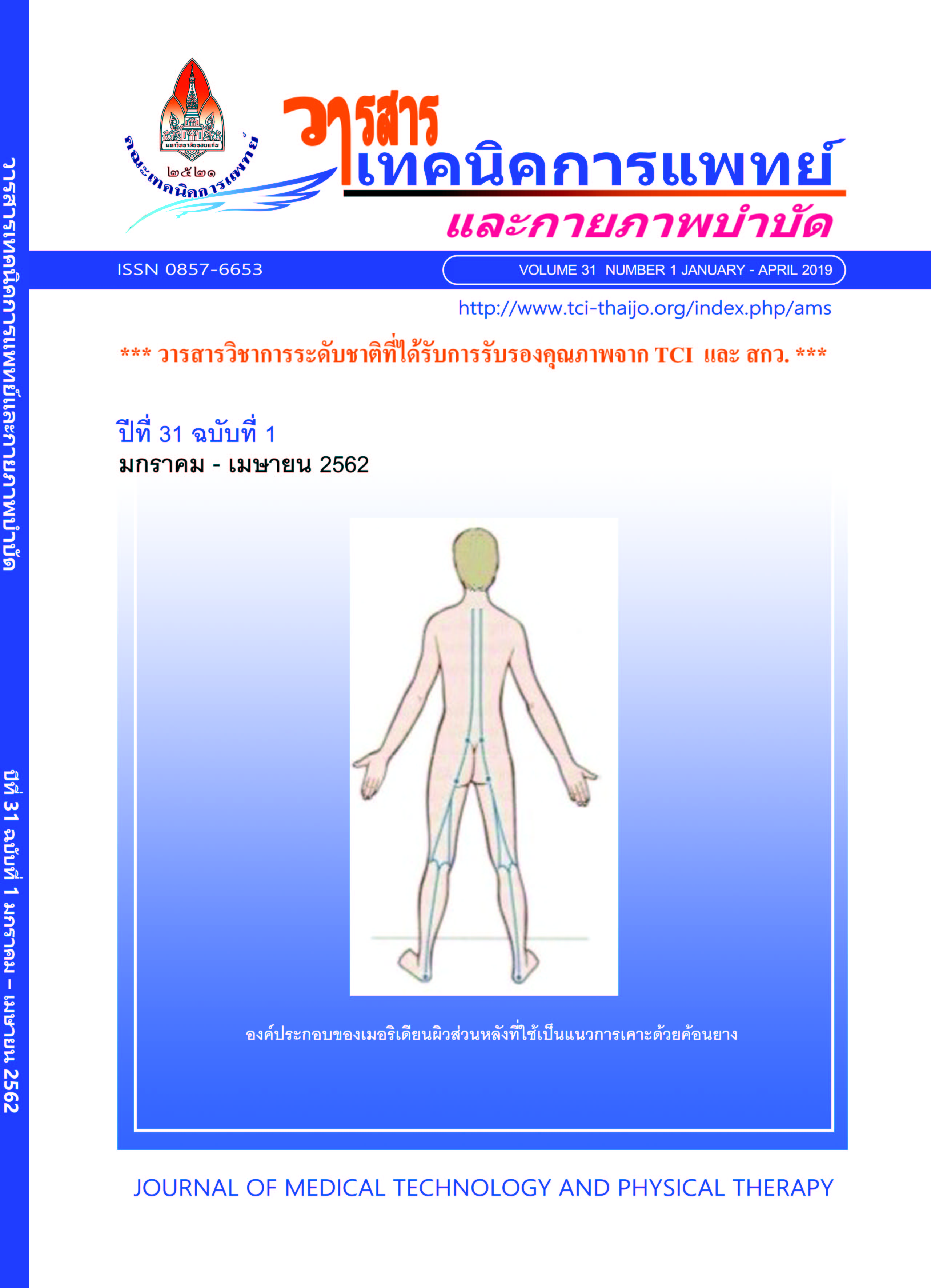Reliability and rapid analysis method of plasma busulfan by solid phase extraction gas chromatography-mass spectrometry
Main Article Content
Abstract
Busulfan is an alkylating agent used in combination with cyclophosphamide as a conditioning agent prior to bone marrow transplantation. Therapeutic drug monitoring and dose adjustment are currently used to optimize and individualize therapy with busulfan. The reliability and rapid analysis method of plasma busulfan are important. GC-MS assay method was developed and validated for the determination of plasma busulfan. Busulfan was extracted from plasma samples and derivatized with NaI2 prior to GC-MS determination. The Solid Phase Extraction (SPE) was used for extraction. The method was developed and fully validated according to USFDA guideline. The limit of quantification (LOQ) was 10 ng/mL for busulfan. The method was fully validated in terms of selectivity, accuracy, precision, linearity (r2>0.9994) and stability. The recoveries of extraction ranged from 99.65-100.19% with repeatability. A rapid, sensitive, accurate and reproducible of GC-MS method for quantification of busulfan plasma levels were developed and validated, suggesting that this method could be used for routine analysis.
Article Details
References
Lu C, Braine HG, Kaizer H, Saral R, Tutschka PJ, Santos GW. Preliminary results of high-dose busulfan and cyclophosphamide with syngeneic or autologous bone marrow rescue. Cancer Treat Rep 1984; 68: 711-7.
de Magalhaes-Silverman M, Lister J, Rybka W, Wilson J, Ball E. Busulfan cyclophosphamide (BU/CY2) as a preparative regimen for patients with lymphoma. Bone Marrow Transplant 1997; 19: 777-81.
Lee JL, Gooley T, Bensinger W, Schiffman K, McDonald GB. Veno-occlusive disease of the liver after busulfan, melphalan, and thiotepa conditioning therapy: incidence, risk factors, and outcome. Biol Blood Marrow Transplant 1999; 5: 306–15.
McDonald GB, Hinds MS, Fisher LD, Schoch HG, Wolford JL, Banaji M, et al. Veno-occlusive disease of the liver and multiorgan failure after bone marrow transplantation: a cohort study of 355 patients. Ann Intern Med 1993; 118: 255-67.
Athanasiadoua I, Angelis YS, Lyris E, Archontaki H, Georgakopoulos C, Valsami G. Gas chromatographic-mass spectrometric quantitation of busulfan in human plasma for therapeutic drug monitoring: a new on-line derivatization procedure for the conversion of busulfan to 1,4-diiodomethane. J Pharmaceut Biomed 2014; 90: 207-14.
Hassan M , Ehrsson H. Gas chromatographic determination of busulfan in plasma with electron-capture detection. J Chromatogr 1983; 277: 374-80.
Chen TL, Grochow LB, Hurowitz LA, Brundrett RB. Determination of busulfan in human plasma by gas chromatography with electron- capture detection. J Chromatogr 1988; 425: 303-9.
Bleyzac N, Barou P, Aulagner G. Rapid and sensitive high-performance liquid chromatographic method for busulfan assay in plasma. J Chromatogr B 2000; 742: 427–32.
Xu QA., Kazerooni R, Thapar JK, Andersson BD., Madden TL. Quantitative determination of busulfan in human plasma by UPLC. Chromatographia 2009; 701: 1505-10.
Embree L, Burns RB, Heggie JR, Phillips GL, Reece DE, Spinelli JJ, et al. Gas-chromato-graphic analysis of busulfan for therapeutic drug monitoring. Cancer Chemother. Pharmacol 1993; 32: 137-42.
Department of Health and Human Services Food and Drug Administration, U.S.Guidance for Industry Bioanalytical Method Validation 2001.
The fitness for purpose of the analytical method: A laboratory guide to method validation and related topics. United Kingdom: EURACHEM Guide 1998; p. 5-24.


